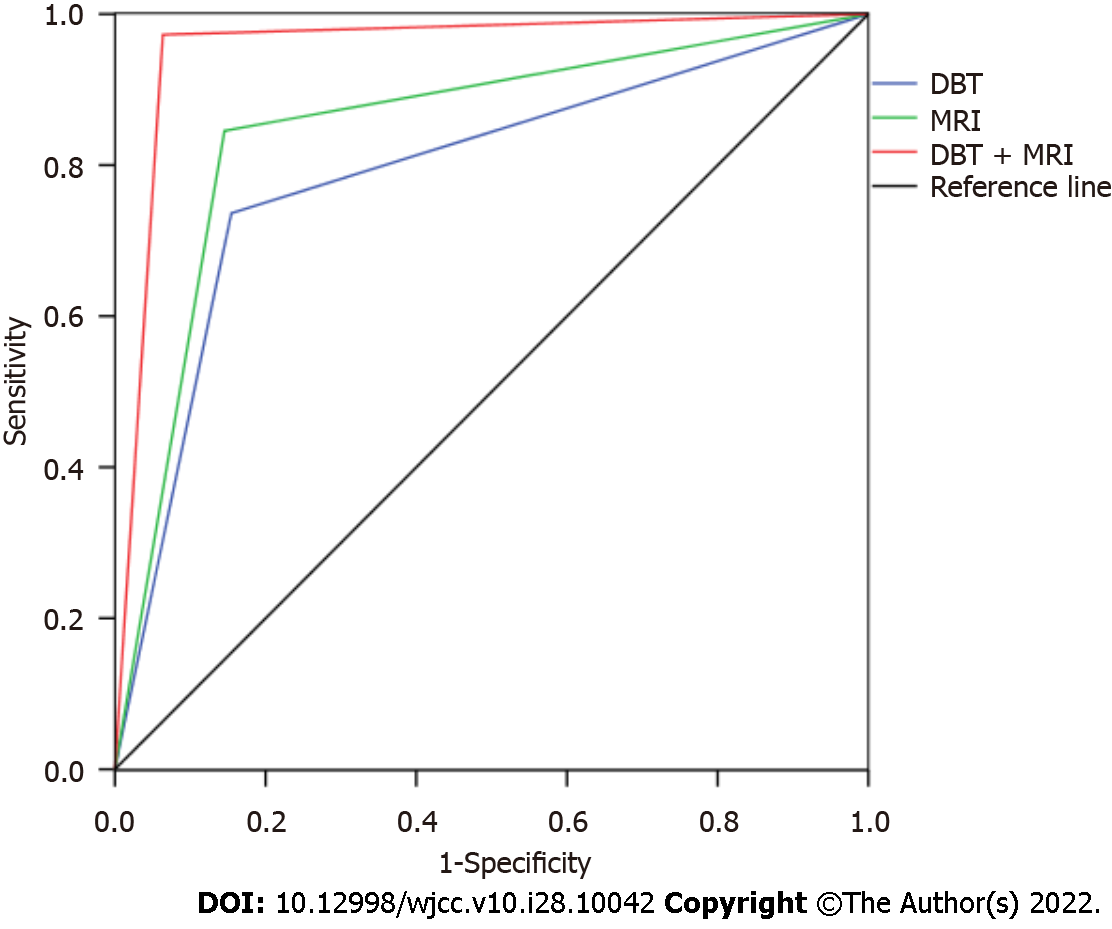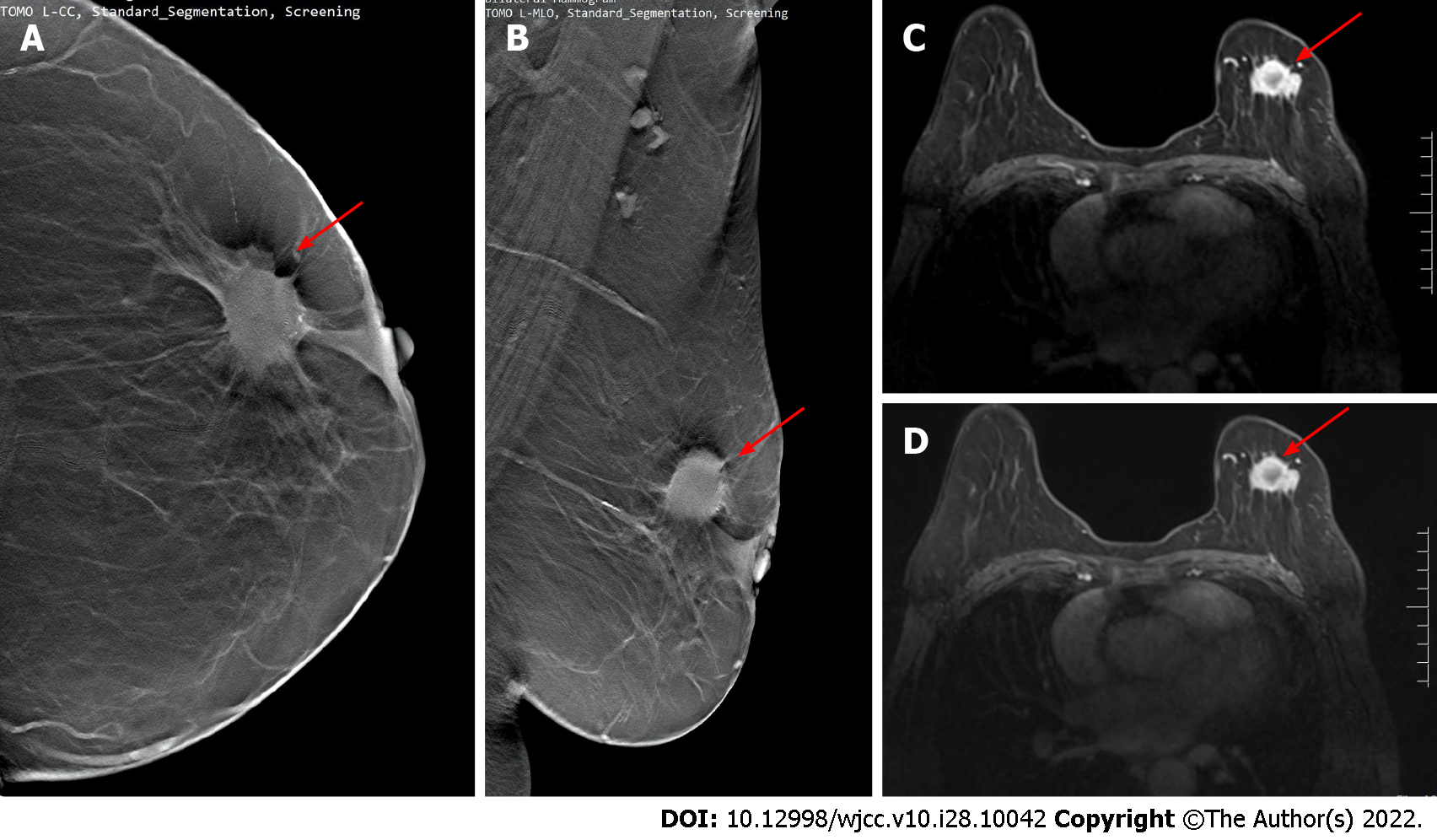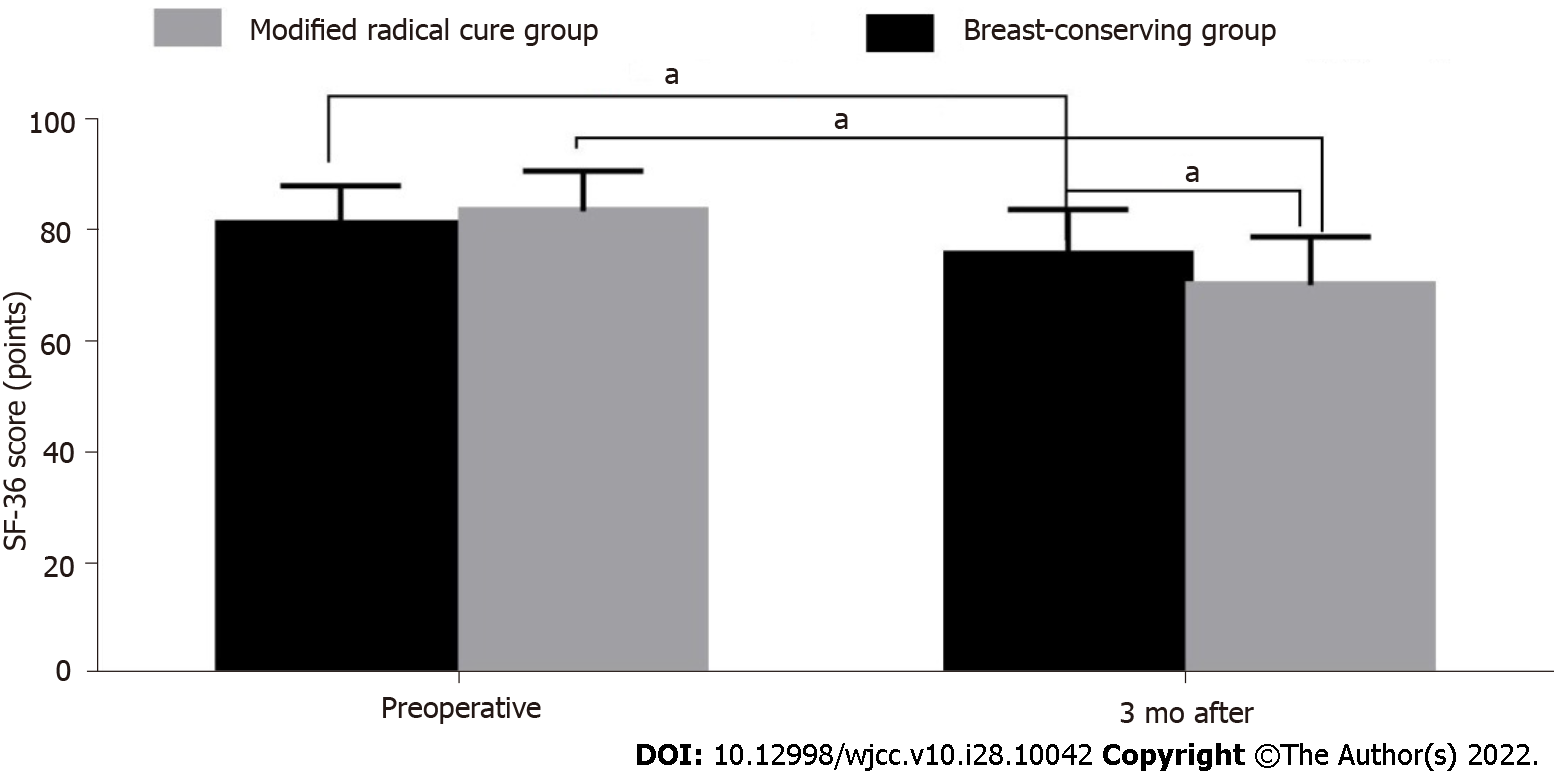Copyright
©The Author(s) 2022.
World J Clin Cases. Oct 6, 2022; 10(28): 10042-10052
Published online Oct 6, 2022. doi: 10.12998/wjcc.v10.i28.10042
Published online Oct 6, 2022. doi: 10.12998/wjcc.v10.i28.10042
Figure 1 Receiver operating characteristic curve of magnetic resonance imaging and digital breast tomosynthesis differential diagnosis of breast benign and malignant diseases.
MRI: Magnetic resonance imaging; DBT: Digital breast tomosynthesis.
Figure 2 Digital breast tomosynthesis and magnetic resonance imaging examination.
A and B: Images of digital breast tomosynthesis examination. Irregular lumps in the upper quadrant of the left breast and burr signs can be seen on the periphery (red arrows); C and D: Magnetic resonance imaging examination images of the same patient. The irregular lumps on the left breast show obvious postoperative disease (red arrows). It was confirmed by physiology as stage II invasive ductal carcinoma.
Figure 3 The postoperative appearance of patients undergoing small incision breast-conserving surgery and modified radical surgery.
A: The postoperative appearance of patients undergoing small incision breast-conserving surgery; B: The postoperative appearance of modified radical surgery.
Figure 4 Comparison of the quality of life scores between the breast-conserving group and the modified radical treatment group.
aP < 0.05.
- Citation: Ren Y, Zhang J, Zhang JD, Xu JZ. Efficacy of digital breast tomosynthesis combined with magnetic resonance imaging in the diagnosis of early breast cancer. World J Clin Cases 2022; 10(28): 10042-10052
- URL: https://www.wjgnet.com/2307-8960/full/v10/i28/10042.htm
- DOI: https://dx.doi.org/10.12998/wjcc.v10.i28.10042












